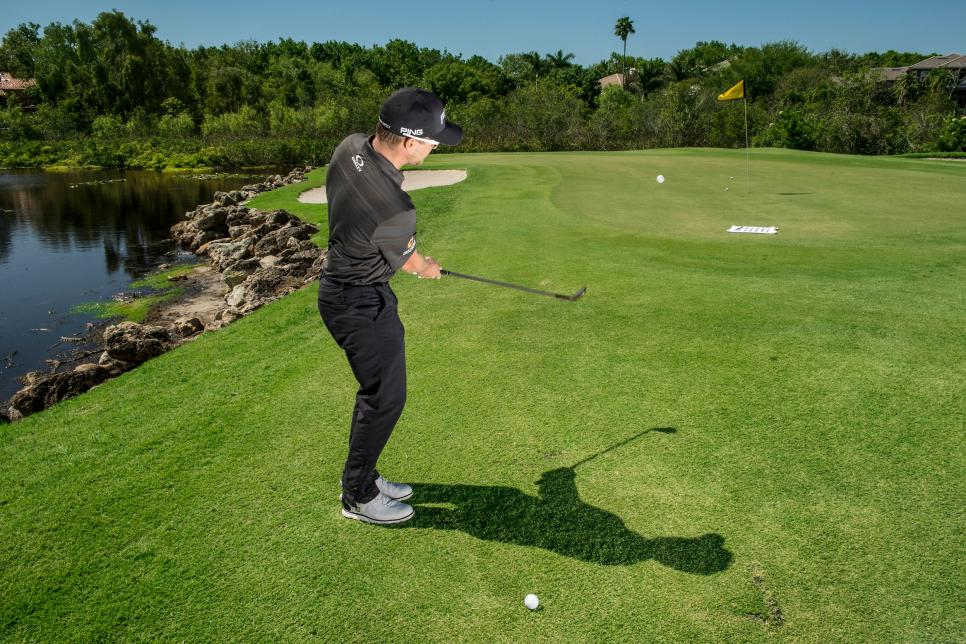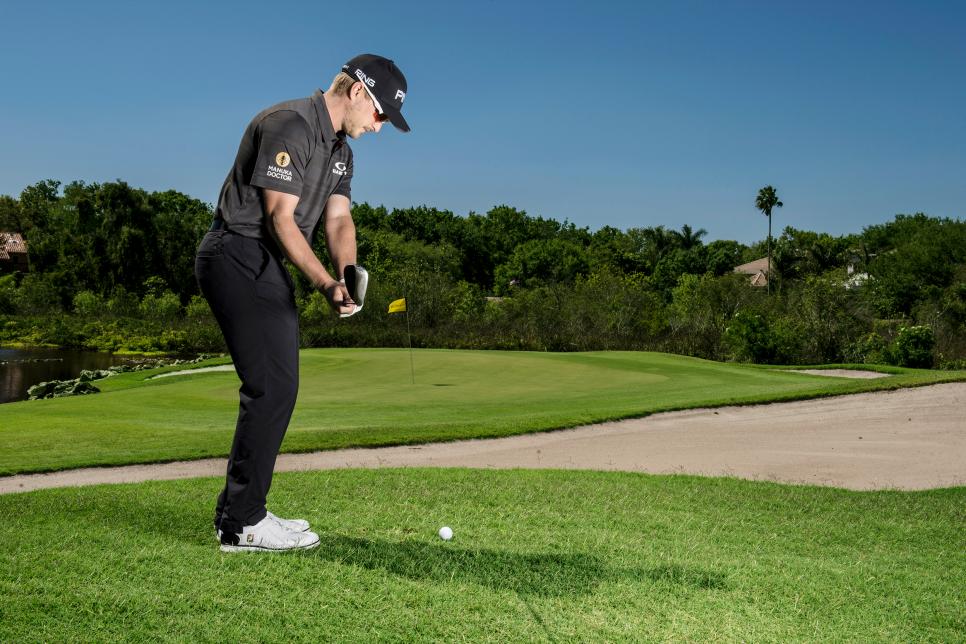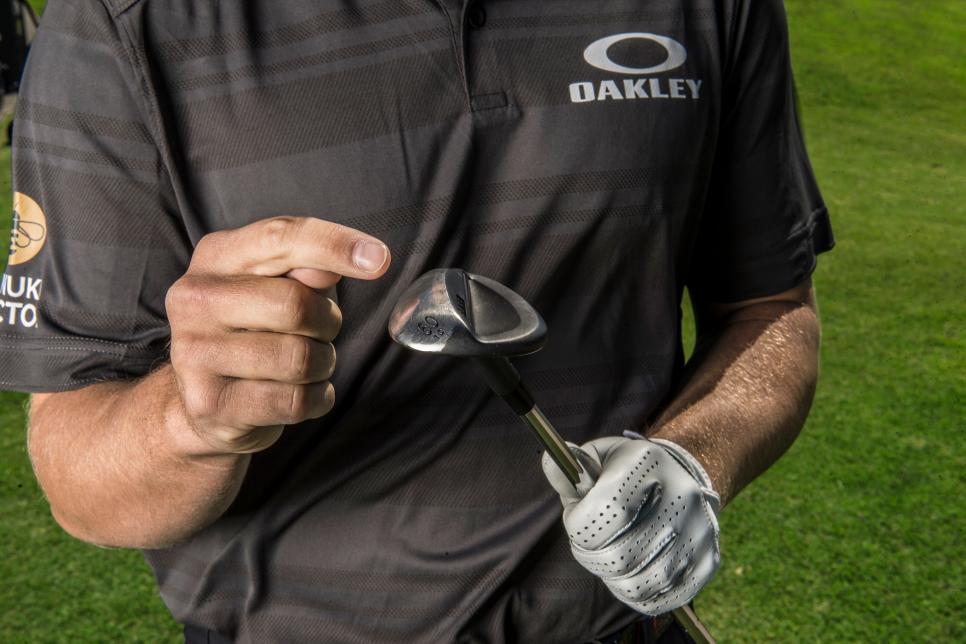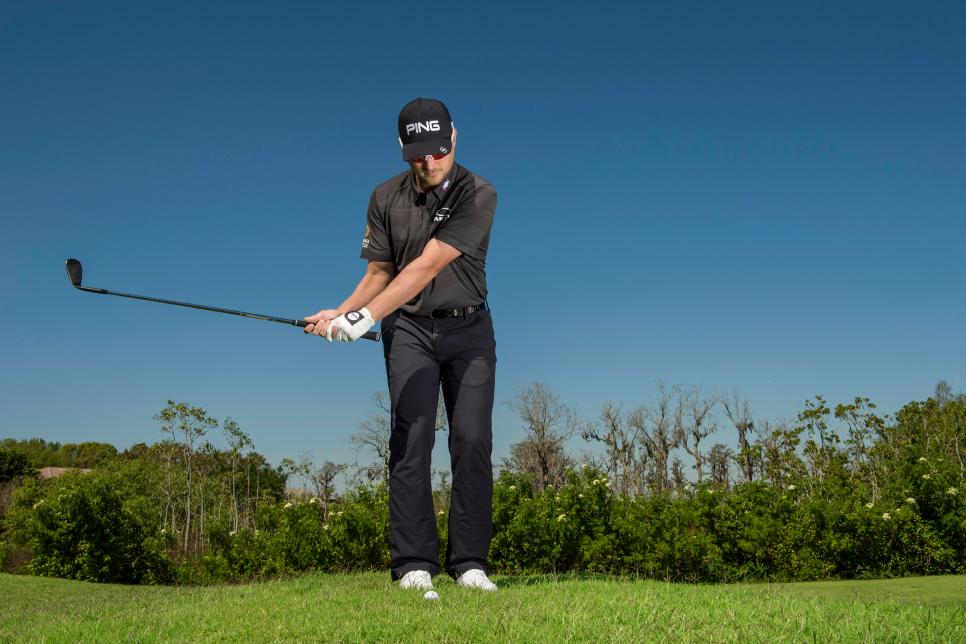Practice chipping like a pro
| 17:03 (há 1 hora) |   | ||
| ||||
If you have problems viewing the email Click Here | |||||
| |||||
| TIP OF THE DAY | |||||
| |||||
INSTRUCTION
Steal a tour-proven technique for better chip shots

Photo by Dom Furore
On the way to my most successful season in professional golf, including a win at the PGA Tour's RSM Classic, I avoided bogey 62 percent of the time when I missed a green in regulation. Without those saves, the 2017-'18 season might have been my first and last on tour. So if I can give you one piece of advice about your game, it's to start looking at your wedges as the tools for survival—and success. First, learn everything you can about the ones you use (loft, bounce, grind, etc.) and if they're right for your game (go see a clubfitter). Once you're happy with your clubs, use them—and use them a lot. If you don't practice, you'll never understand how each wedge and swing technique affects ball flight and spin. And if you don't have an understanding of those two things, you're not going to get up and down very often. Here I'll explain how I decide what club and shot to play and teach you my favorite drill for chipping it to tap-in range. Hopefully you'll follow my lead and become more confident with your wedges. —with Keely Levins

Photo by Dom Furore
HIT THE TOWEL FOR MORE CONTROL
We did this drill in college, and I still use it. Grab a towel, get it wet to keep it from blowing away, and lay it on a green between you and the hole. Now chip balls from off the green on that line trying to land them on the towel. Experiment with different wedges, and hit from different spots paying attention to how the ball reacts to each shot.
You'll soon discover how to produce the trajectory and rollout you want. When you play, imagine the towel is still on the green, and hit the shot best for that situation.
“Whenever you can, go with a lower chip than runs out.”

Photo by Dom Furore
GO WITH THE PERCENTAGES
This is a really tricky lie—downhill in light rough with a bunker between me and the hole. I can hit a variety of shots from here, but there's always one that stands out a little more than the others. The smart play is the shot that will leave you with a decent chance to save par (or carding no worse than a bogey) even when you don't quite execute it.
Here I can either land it in the fringe and let it roll out to the hole or fly it most of the way and let it land soft by the hole. Generally speaking, the easier of the two shots is usually taking a lower-lofted wedge and hitting the runner. But sometimes the lie, or the location of the pin, dictates that flying it with a higher-lofted club is smarter. For example, if I were hitting into the grain of the grass between me and the hole, getting the ball to release when it lands might be tough. In that case, I'd want to fly it high and let it trickle out.

Photo by Dom Furore
LET IT GLIDE TO STOP IT QUICKLY
As I said, you need to get to know your wedges, including the bounce for each club. Without getting too technical, it's how much bulge is on the back side of the club, the spot I'm pointing to here. This design feature helps you slide the club under the ball and pop it up, which is why I want to use a high-loft, high-bounce club for chips that need to be in the air longer than they roll.

Photo by Dom Furore
I get in a narrow stance with my feet open. Then I open the face a little before taking my grip. This exposes more of the bounce, making it easier to slide the club along the ground. If you swing with a shallow, sweeping motion along the turf, the ball should pop right up.

Photo by Dom Furore
FIND YOUR COMFORT ZONE
Some things about chipping technique are fairly standard. For example, the farther forward you play the ball in your stance, the higher it will tend to fly. So keep that in mind if you like to play the ball back in your stance and hit down on it. It's probably not going to get too far off the ground. But there are other things about chipping you can personalize.
Two of my preferences are to leave my glove on and to make a swing on a path that's a little in to out in relation to the target. My path helps shallow the club and keeps me from chunking it. The glove? Not sure why I leave it on, it just feels comfortable. The point is, I own it. If you do what makes you comfortable, you'll be more confident on the course.










